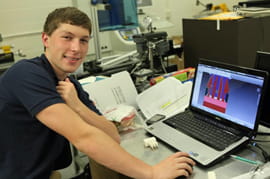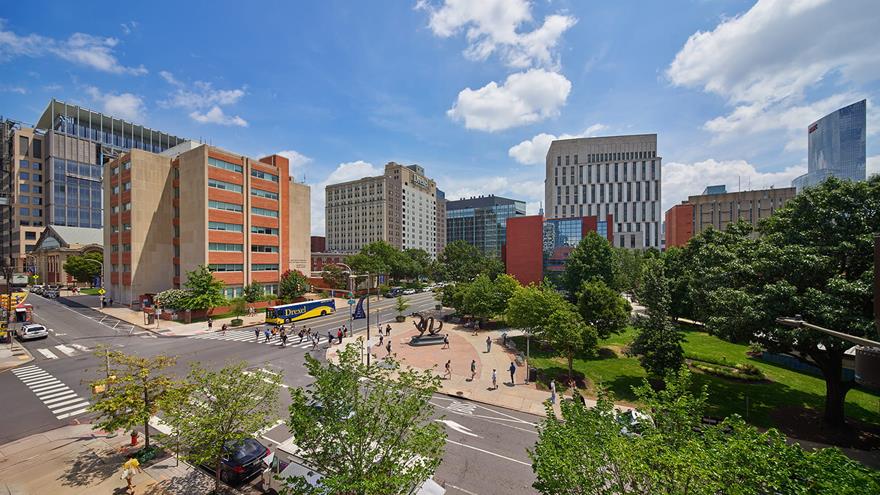Drexel Freshman Lands Co-op at NASA

Daniel Diazdelcastillo said he was drawn to study at Drexel because of its unique cooperative education program. Little did he know his commitment to becoming a Dragon would secure a co-op even before setting foot on campus as a freshman.
During his senior year of high school, Diazdelcastillo pursued and secured an internship with the Innovation Lab in NASA’s Goddard Space Flight Center—an experience that he said will continue to shape his Drexel education.
“I finished my internship there during the summer, but the NASA environment—there’s always something to learn there,” said Diazdelcastillo, currently a material science and engineering major. “My mentor there guaranteed me another co-op there to take on more.”
During his internship, Diazdelcastillo spent six weeks working in NASA’s manufacturing branch, primarily as an engineering assistant.
“There was a lot of work to be done, so there were six of us internship students, all working together on one project,” Diazdelcastillo said.
The interns’ massive undertaking, Diazdelcastillo said, was to repair one of NASA’s 3D printers.
“It wasn’t working and had been completely disassembled with lots of parts everywhere,” Diazdelcastillo said. “It was our job to reconstruct it.”
He said the problem with the printer was that the extruder—the part of the machine that squeezes out the plastic to be printed—was not functioning.
“Each of us had a specific part of the project to work on,” Diazdelcastillo said. “My part was to redesign a free-spinning, three-clawed wheel that holds a big reel of plastic that is fed into the printer.”
With the help of Diazdelcastillo’s wheel design, he said, the extruder was able to essentially pull the plastic into the 3D printer, where it is melted and then formed into the shape the user designed.“It was actually a pretty fun project,” Diazdelcastillo said.
Aside from the 3D printer project, Diazdelcastillo said he was able to dabble in a few other smaller projects—including designing products in AutoCAD and using the 3D printer to see them come to life.
“I originally wanted to apply to NASA because I was interested in aerospace and aeronautical engineering,” Diazdelcastillo said. “And I found it was a great experience—I really enjoyed it and I learned a lot. It made me learn that I love constructing.”
Perhaps most inspiring about his internship, Diazdelcastillo said, were the NASA engineers and scientists at work around him.
“There are very intelligent people there—all who are willing to give you information if you ask,” Diazdelcastillo said. “Outside of our door where I was working, they were building a satellite, and it was interesting to me how if you just asked them what they were doing, I could learn about what it was they were putting together.”
“When it came to actually working, I was able to present ideas to the manager at NASA, who would approve funds and give us material to do whatever we wanted, as long as it did the job,” Diazdelcastillo added. “It gave me an experience about how NASA and other companies actually work—how to really brainstorm and get things done—and it was good to have that process under my belt, and it’s great that I’ll have the chance to do that again.”
In This Article
Drexel News is produced by
University Marketing and Communications.
